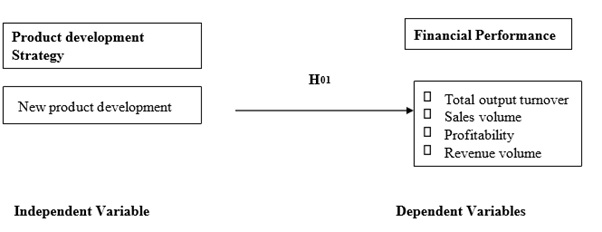Evaluating the Effectiveness of Product Development Strategy on First National Bank Financial Performance
Kumwenda E1*, Mulenga A2
DOI:10.5281/zenodo.14792728
1* Esnart Kumwenda, Graduate School of Business, University of Zambia, Lusaka, Zambia.
2 A Mulenga, Graduate School of Business, University of Zambia, Lusaka, Zambia.
Product development strategy is crucial for banks to remain competitive and achieve financial success. This study was aimed at evaluating the effectiveness of product development strategy on the financial performance of FNB in Lusaka. The study adopted a quantitative approach using survey questionnaires and panel analysis of financial data from 09 FNB branches in Lusaka. The results of the study revealed that the majority of respondents were middle-aged males with some experience and a first-degree education. Over 60% were aware of product development strategies, with short- and long-term financing options being key strategies. The study revealed a weak positive relationship between product development strategy and financial performance. The correlation between ROA and the predictor variables (R=0.545 was greater than 0.5) meaning there was a strong positive correlation between ROA and the predictor variables. The coefficient of the regression analysis denotes the amount of deviation in the predicted variable that is to say ROA that is explained by the predictor variables. The square of R=0.297 reveals that 29.7% of the changes in ROA was attributed to predictor variables. The Durbin-Watson test statistic was 1.158 which indicated that no correlation existed among the residuals in the model. Effective product development strategies, such as innovation and customer-centric approach, contributed to improved financial performance. The implication of this study is that, the study's findings will provide insights into the effectiveness of the e-wallet product development strategy in improving financial performance at First National Bank, inform the development of effective e-wallet product development strategies, and contribute to the existing literature on product development strategy and its effectiveness on financial performance.
Based on the obtained results, The study recommends that FNB consider diversifying its product offerings to appeal to a broader demographic range and adopt effective product development strategies, such as innovation and customer-centric approach, to improve financial performance.
Keywords: product development, financial performance, strategy, digital banking, e-wallet first national bank
| Corresponding Author | How to Cite this Article | To Browse |
|---|---|---|
| , , Graduate School of Business, University of Zambia, Lusaka, , Zambia. Email: |
Kumwenda E, Mulenga A, Evaluating the Effectiveness of Product Development Strategy on First National Bank Financial Performance. soc. sci. j. adv. res.. 2025;5(1):21-36. Available From https://ssjar.singhpublication.com/index.php/ojs/article/view/216 |


 ©
© 